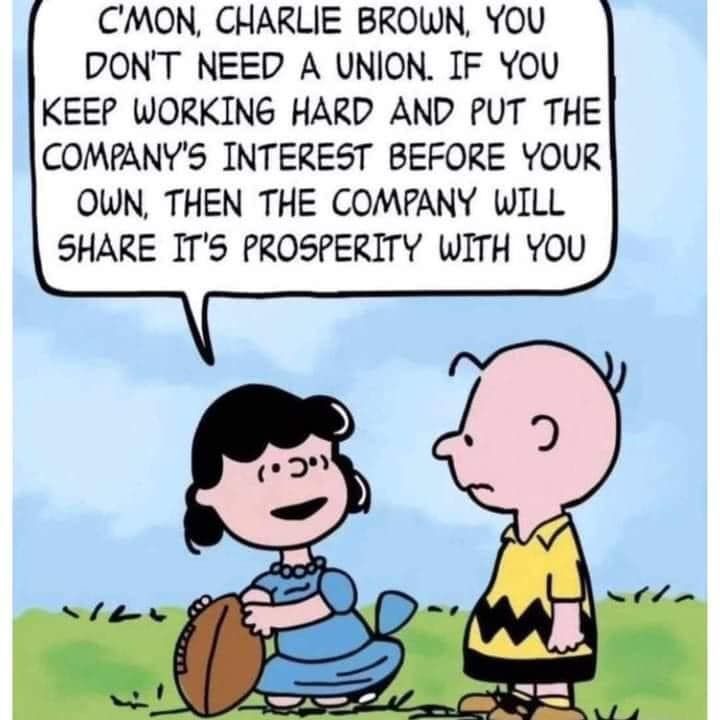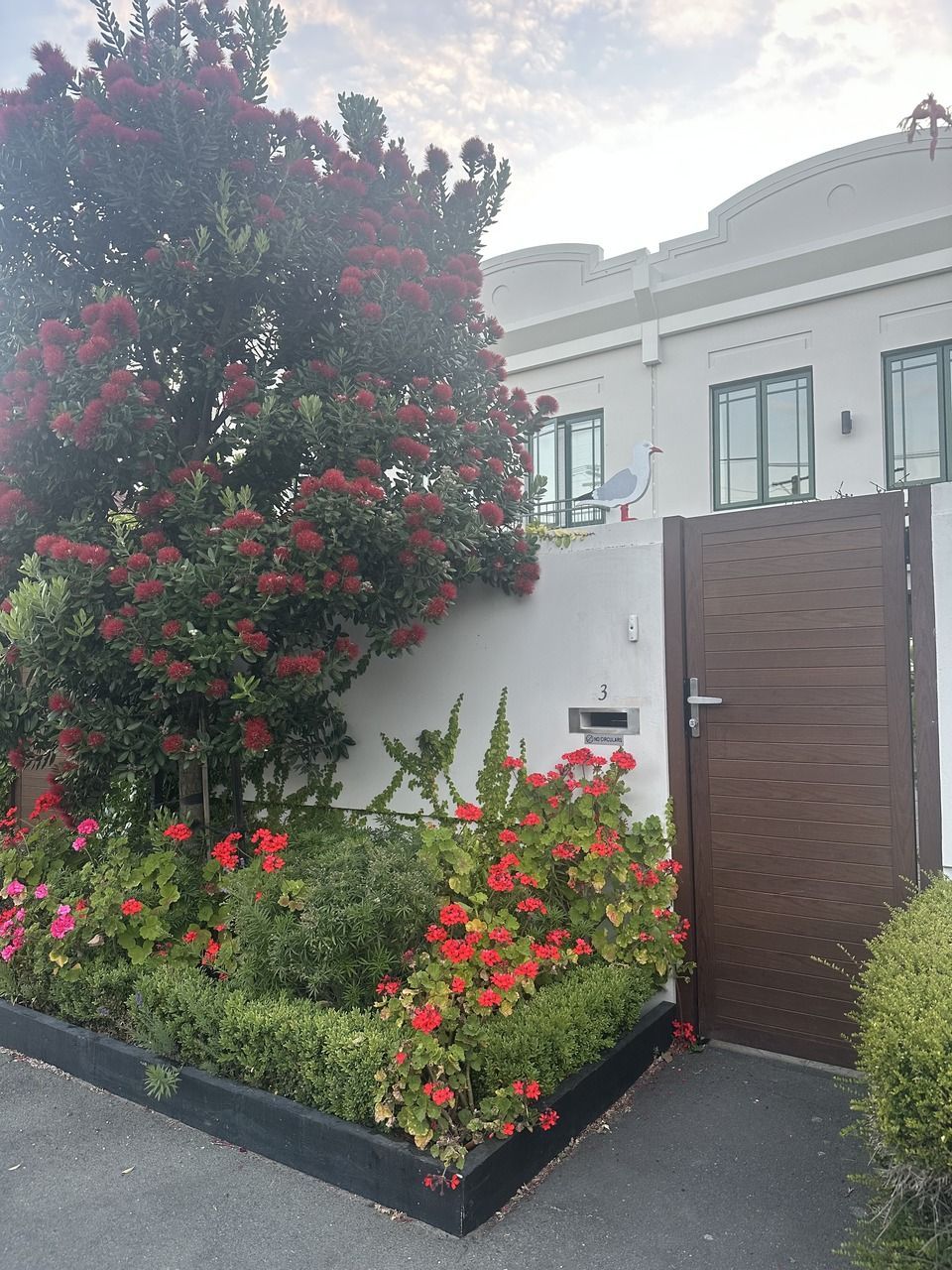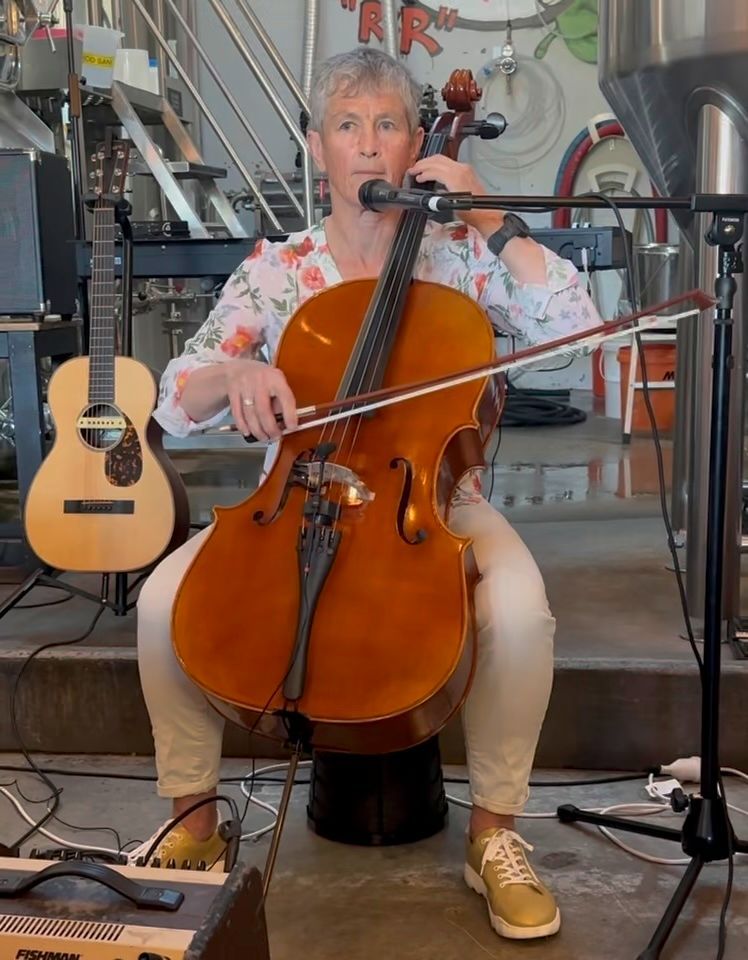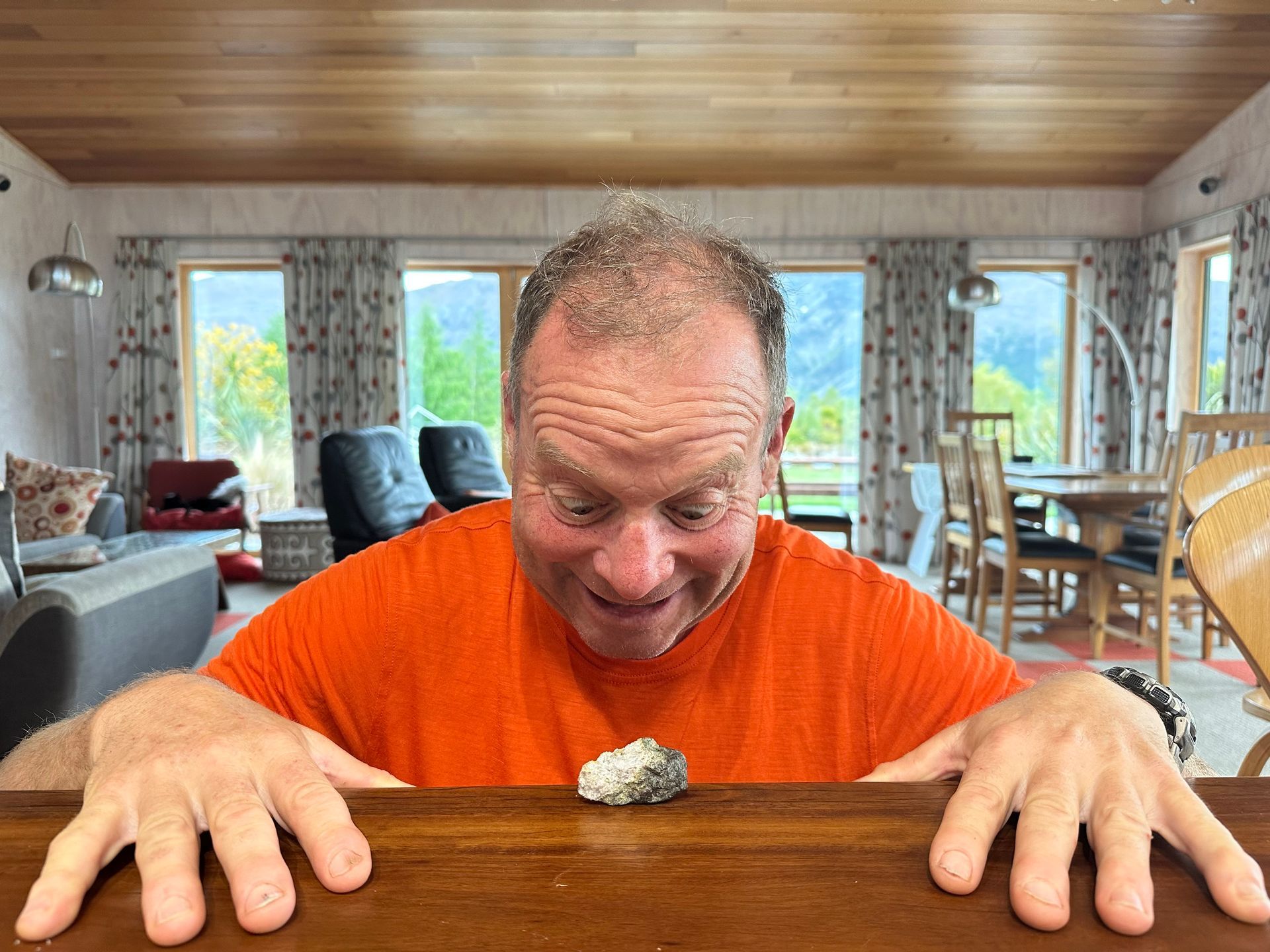Truth & Fiction
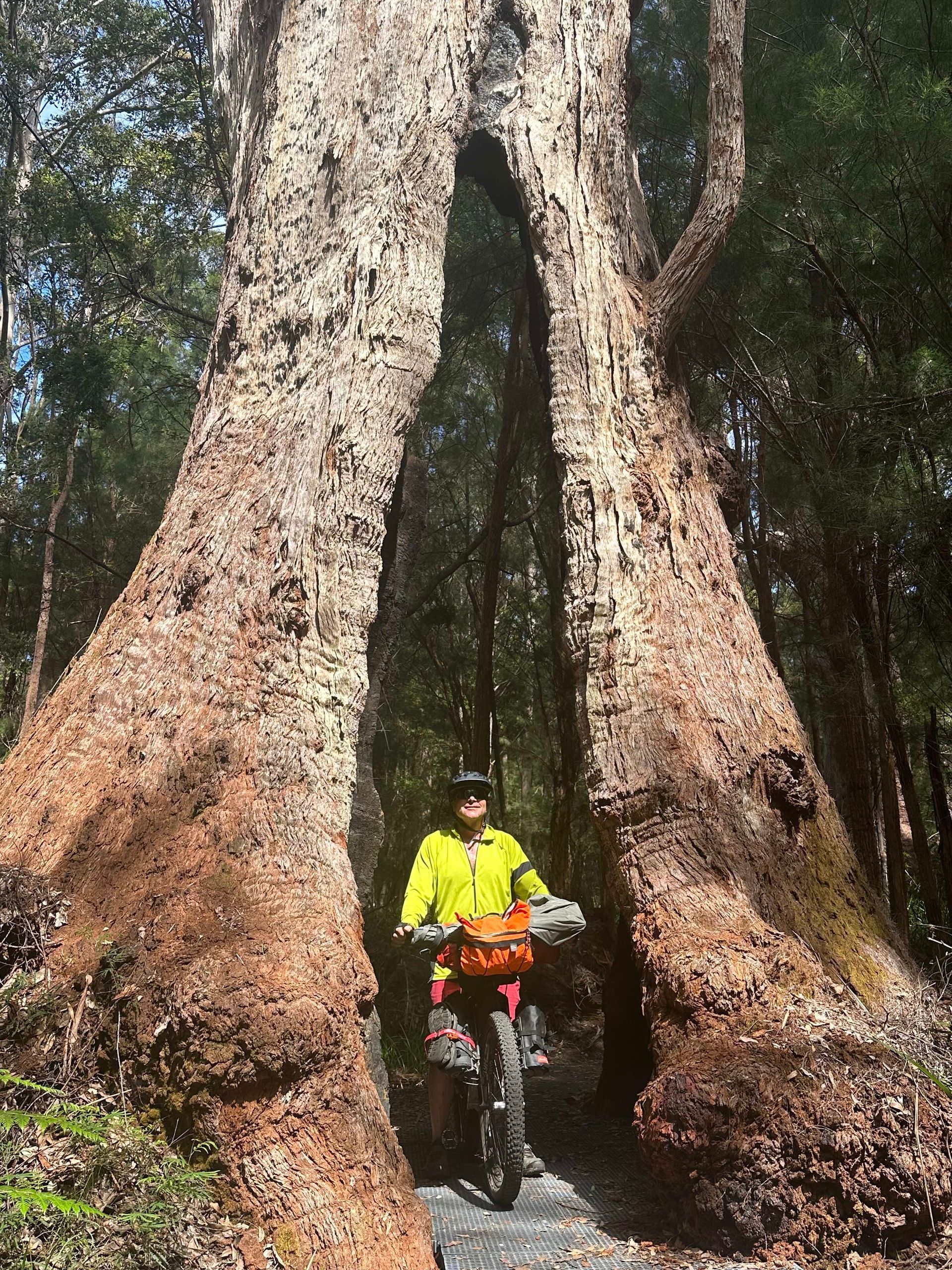
Chris existing a tree portal in Western Australia
When I’m participating in creative writing, I refer to myself a professional writer of non-fiction – strategising and crafting research funding proposals. Then my standard joke is to point out there’s a fine line between fiction and non-fiction when it comes to research proposals. This sounds nefarious but, in reality, a proposal is about the future so can only be (at best) a prediction of what might take place. Further, the creative element in funding proposals is writing them as a narrative that conveys the intentions of the proposer while catering to what the funder has said they want to hear. Not to mention that the biggest funder of research in New Zealand (the Ministry of Research, Science and Technology) is on record as saying that they want proposals to be ‘a plausible story’.
When you think about writing too hard, it becomes entirely unclear as to what ‘truth’ might be. If you write historical fiction you are creating your best rendition of an event in which, often, you didn’t participate, so are depicting based on the reports of others. You can verify to some extent, regarding how aligned those reports are. Except that alignment of what people say doesn’t always mean truth, it could mean people want to say the same things as everyone else because we humans are social creatures. There’s also the issue of whether people even want to be truthful – they might, or they might not, depending on the situation.
We meet the boundary between truth and fiction every day in media reporting. It’s pretty clear that it’s no longer possible to determine that boundary, given the way information is being manipulated. There are multiple claims being made about the Hamas-Israel conflict that appear not to be true when investigated – that Iran was involved, that Hamas militants raped Israelis, that Hamas militants beheaded babies. Hamas initially reported the explosion in the Gaza hospital as being caused by Israeli shelling. A movie has been posted that supposedly shows Israelis, or Palestinians (depending on who the circulators were supporting), creating fake footage of deaths. The movie was actually … a movie! It wasn’t anybody faking anything– it is a movie about an actual Palestinian boy who was hit by a car in East Jerusalem.
I’ve also been encountering the border between truth and fiction in a memoir class I’ve been taking. I’m not at all sure whether I want to write a memoir but I’m interested in it as a literary form that straddles the borders between non-fiction and fiction. I’ve often wondered about the level of detail described in memoir. Can people really remember what was worn on a particular day, and what was said? It turns out that:
a) Such detail is essential to bringing the reader into the story.
b) Detail may be available from e.g. photographs or diaries, but in many cases it is conjured up to be as realistic as possible from the point of view of conveying the core of the story being told.
I’m reading memoir (and autobiography) with a whole new lens now. Not that I read a lot of either – at the beginning of the memoir class I had to admit that I didn’t read a lot of the genre because I often find them boring! There’s only so much of people’s lives that are interesting and most memoirs are of a length that goes beyond that point. My favourite has been New Zealand designer David Trubridge’s authobiography – So Far. I genuinely wanted to know more at the end of the story – he’s had a fascinating life, the narrative of which is completely interwoven with his creativity. In writing this blog I have discovered he published another memoir last year – The Other Way. I will have to read it.
In the course of the memoir class I have also read the very interesting story of Ruth Shaw – The Bookseller at the End of the World. Ruth runs two tiny bookshops in Manapouri and has had a varied life that involved a lot of time on sailboats, a parallel with David Trubridge. Are people who have lived on sailboats particularly interesting?
To close off – here’s a piece of flash fiction I wrote which is based on a true statement and in which some of the details are true. I’ll leave you to figure out which is which.
The Portal
“A portal will open in the garden at four am,” says the proprietor of the Collingwood café. His long, unkempt grey hair contrasts with his unremarkable jeans and button down shirt. He has just persuaded me venison steak is the best item on the menu. It is also the most expensive.
I’ve already shifted focus to posting images of bikepacking the Heaphy track for Mum’s online pictorial entertainment while my brain processes the proprietor’s comment offline. I must have misheard. “A portal? Where to?”
“It’s not where to, but what for,” the proprietor says. “It’s for items too weighty to remain in your life.”
“What does it look like?” I’m searching for an appropriate response.
“Like my painting,” the proprietor says. He points to the wall, then turns away to serve another customer.
The café walls are covered with pictures I’d screened out as being of the dream-catcher ilk. Now I study this particular image more closely. It features a yellow vortex with a burnt orange core boring through bright blue sky above a host of bird-of-paradise flowers. I like the flowers.
After dinner, I wander slowly past the garden to view the location of the potential portal. A miscellany of items jostle for space between pots of lavender, marjoram, parsley, coriander. The largest is a grandfather clock. Knitted baby’s booties, wool yellowed with age, sit neatly at the clock’s foot beside a gold filigree teacup on a dainty saucer.
I see a bundle of letters with a dried rose tied on with string. A faded blue sunhat with reading glasses and a pipe perched on the brim nestled in the marigolds. A dog collar with a bone hanging from it. A wooden-handled hammer, saw and brace and bit. An axe leaning against the clock. A lacy white dress, carefully folded around tissue paper sitting on a coffee table with an inset chess board. I ponder on whether a portal might sweep up everything in its vicinity or whether it would be selective. Are the plants at risk?
Next morning, I breakfast at the same café. The garden now hosts only herbs and pebble mulch. Who’d move a grandfather clock overnight? Or is ‘portal’ local jargon for the rubbish truck? Then the painting catches my eye. A clock, booties and tea-cup now fly skyward into the orange heart of the spiral.
